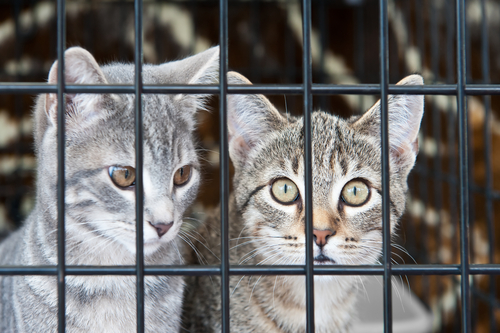
Photo: Shutterstock
If you’ve decided to adopt a cat, especially if it’s a stray, be well-prepared for your new arrival. Cats are particularly sensitive to new surroundings and some may hide under a bed or in a closet for days or even weeks.
According to an article published in CNN, American Pet Products Association (APPA) estimates that about 38 million U.S. households have cats and people are walking extra miles to ensure their feline houseguests are happy. You can avoid pitfalls with your new pet by following these guidelines:
Feeding: When the weaning process is underway, at around six to twelve weeks old, kittens need to be fed about four times daily. Kittens that are three to six months old can be fed three times daily. If your kitten is reluctant to eat, soak the dry food in warm water and then offer the food. Kittens can also be given human baby food made of chicken for a short while, which can then be mixed in with appropriate kitten food.
Adult cats can be fed once, twice or thrice daily. The quantity of their meals should be adjusted accordingly – either one large meal or two or three small meals every day.
Give your cats a good-quality cat food, recommended by your vet and always keep fresh water accessible to them. You may be tempted to give your cats milk, but contrary to popular belief, milk is not good for cats.
Grooming and handling: Cats are very clean animals by nature and hardly need to be bathed. However, regular brushing helps keep cat’s coat in good condition, reduces shedding and lowers the chances of your cat coughing up hairballs. Use brushes and combs that are comfortable and appropriate for your cat’s type of coat and cautiously apply pressure when you brush as a cat’s skin is sensitive and thin.
While handling your cat, never lift it up by the scruff of its neck. Don’t lift up your cat by its front legs either. The right way to pick up your cat is by placing one hand behind its front legs and the other under its abdomen, near its hindquarters.
Managing space: Your cat should be assigned its own place in your home where it can rest. Its bed should be soft and warm and kept clean and dry. Keeping your cat indoors is the best way to avoid it contracting infections and getting into fights with other animals on the street. Indoor cats will need a litter box to get rid of waste. Place the cat’s litter box, food, water and bed in a designated space, preferably near a window. Change the litter weekly and scoop out faeces daily.
Playing: Cats can entertain themselves to no end with pet toys by stalking and catching them. Don’t use your own fingers as bait though as it can encourage biting and scratching later on. Cats instinctively scratch to sharpen their claws. Get your cat a scratching post to stretch and scratch on. Make sure it’s fixed stable so that it doesn’t topple over when used.
Visit the vet: Bring your new cat to a caring veterinarian for a wellness exam within one week after adoption. Your veterinarian will make an assessment of your pet’s health and advise you.
Please like FamiLife’s page on Facebook so that you get all our articles and others may find us.
